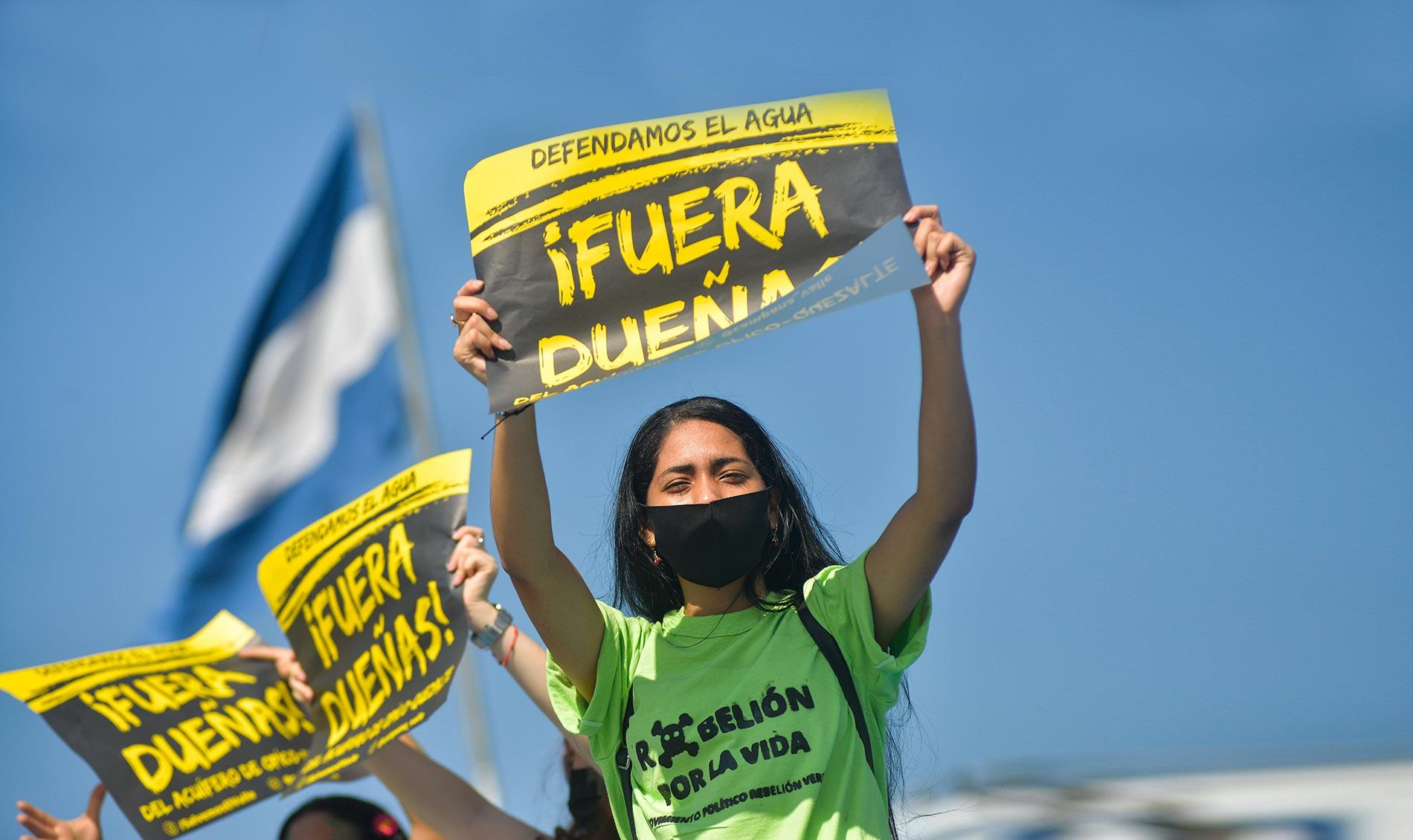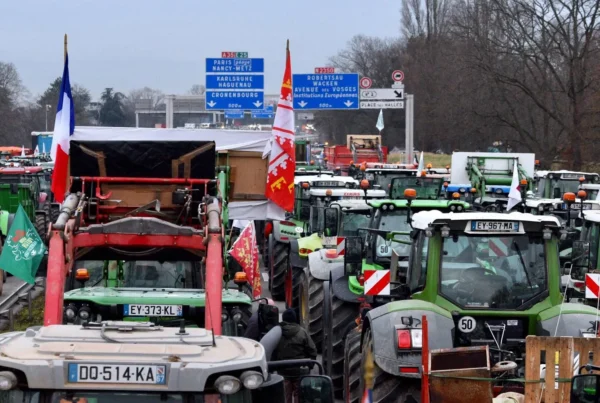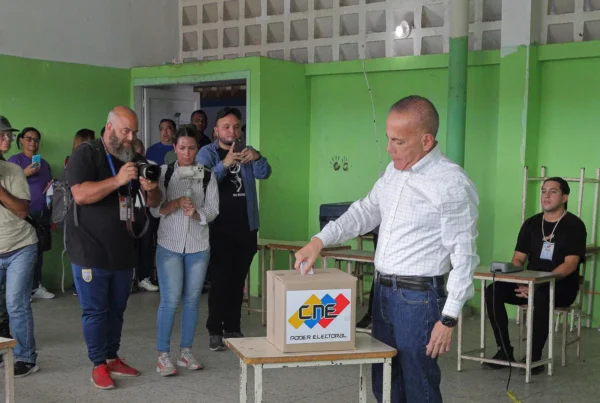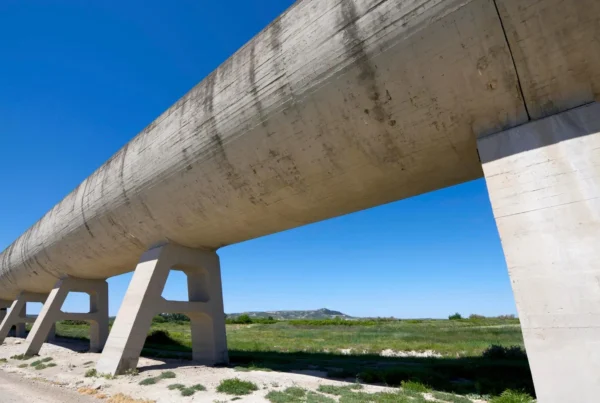Despite being blessed with some of the largest reserves of freshwater, more than 130 million people in Latin America & the Caribbean have no access to potable water. Inadequate sewage and industrial waste disposal, along with deforestation, have made the easiest sources of water inaccessible. As governments tackle the issue, the fear of privatization grows across civil society.
Rael Almonte Reyes
29 August 2022
Chinese version | French version | Spanish version
“Yes, we are poor, but we have the right to water. Just because we are poor doesn’t mean we should live without it”. The struggles of this unnamed protester in El Salvador illustrate the widespread sentiment throughout Latin America’s middle and lower-class communities. Despite being blessed with some of the largest reserves of freshwater, access to water in Latin America and the Caribbean is highly competitive.
More than 130 million people in Latin America have no access to potable water, and only about one in six enjoy adequate sanitation services. On average, a Latin American receives about 1010 cubic feet of water per year, significantly lower than North America’s 4160 cubic feet and Europe’s 2255.6 cubic feet. While this may point to a scarcity of the vital resource, in reality, the region has such an abundance that it could provide about 110 500 cubic feet of water to each person in the region.
If scarcity is not a problem, then why is access to water so difficult in the region? One of the biggest culprits is pollution, with sewage being the “water villain”. Lack of sewage systems, coupled with droughts, climate change, and the dumping of industrial and heavy metal waste into water, has led to about one-third of Latin America and the Caribbean’s waters being polluted. Additionally, the proliferation of deforestation has exacerbated the issue. According to the World Water Forum, about 44 thousand square kilometers of forests are chopped down every year. This rapid deforestation not only leads to the drying up of the most accessible water resources but may lead to an increase in pollutant gas emissions.
The pollution of water resources often points to a failure on part of the government to properly regulate, and ensure access to water. In regards to this failure, El Salvador serves as a microcosm of a regional problem. In a scathing critique of the Salvadoran government’s inaction, Sally Jabiel, a freelance journalist for Planta Futuro / El Pais, wrote about her visit to three rural communities in El Salvador.
Interviewing women in the towns of Panchimalquito, Pajales, and El Divisadero, Ms. Jabiel highlights the dangerous daily journey they must take to provide their families with drinking water. She also points out that in these three towns, there were over 730 families that have never had access to potable water in their homes. The experiences of these rural towns are representative of a much bigger issue. According to the Salvadoran Ministry of the Environment, about 71% of all Salvadoran rivers are classified as having “bad” water. The United Nations adds that more than 600,000 people, about 10% of the population, in the country have no access to potable water.
In an Al-Jazeera English interview, Miguel Gutierrez, coordinator for issues related to water for World Vision International, a Christian development and humanitarian aid organization, in El Salvador, spoke about the latest effort by the government to ensure access to water. In December of 2021, the government passed a law called the “General Law of Water Resources”, which codified access to water as a human right. While a step in the right direction, Mr. Gutierrez remains skeptical. Symbolic of many laws and constitutions in Latin America, the law is fairly progressive, but the devil lies in its implementation. Without building up the country’s water capacity and investing resources to make water more accessible, the law will be toothless at best.
According to some social and environmental groups, the law may worsen the crisis, as it leaves the door open to the privatization of water resources. While the decision on how this law will be implemented is left to a “Special Committee of Water Administration”, the new law does permit private companies to extract up to 365 000 cubic meters of water per year, with a 15-year renewable permit. Furthermore, neighborhood associations, which often provide public services in the absence of the state, will be placed at the level of “private companies”, meaning they would have to pay to extract water.
Fears of privatization have led to protests from rural communities and civil society groups, arguing that the privatization of water resources would lead to increased prices across the board, making water even more inaccessible to the poor. These fears stem from the plethora of disastrous water privatization schemes throughout Latin America and the Caribbean, perhaps the most famous being the privatization of water resources in Cochabamba, Bolivia.
If the case of Cochabamba in Bolivia is anything to go by, then Latin American communities have every right to be worried. In Cochabamba, access to water was sold to Spanish and American companies, which more than doubled the price of water to meet annual profit quotas. This led to massive protests which left a teenage boy dead, and over 100 Bolivians wounded. Cases such as the Cochabamba privatization scheme are numerous across the region, and the fear of price hikes for essential resources is ever present.
While the decision in El Salvador has been left to the Special Commission of Water Administration, the central question which applies to all governments in Latin America is left unanswered: Will El Salvador prioritize the most vulnerable communities or side with private corporations?







